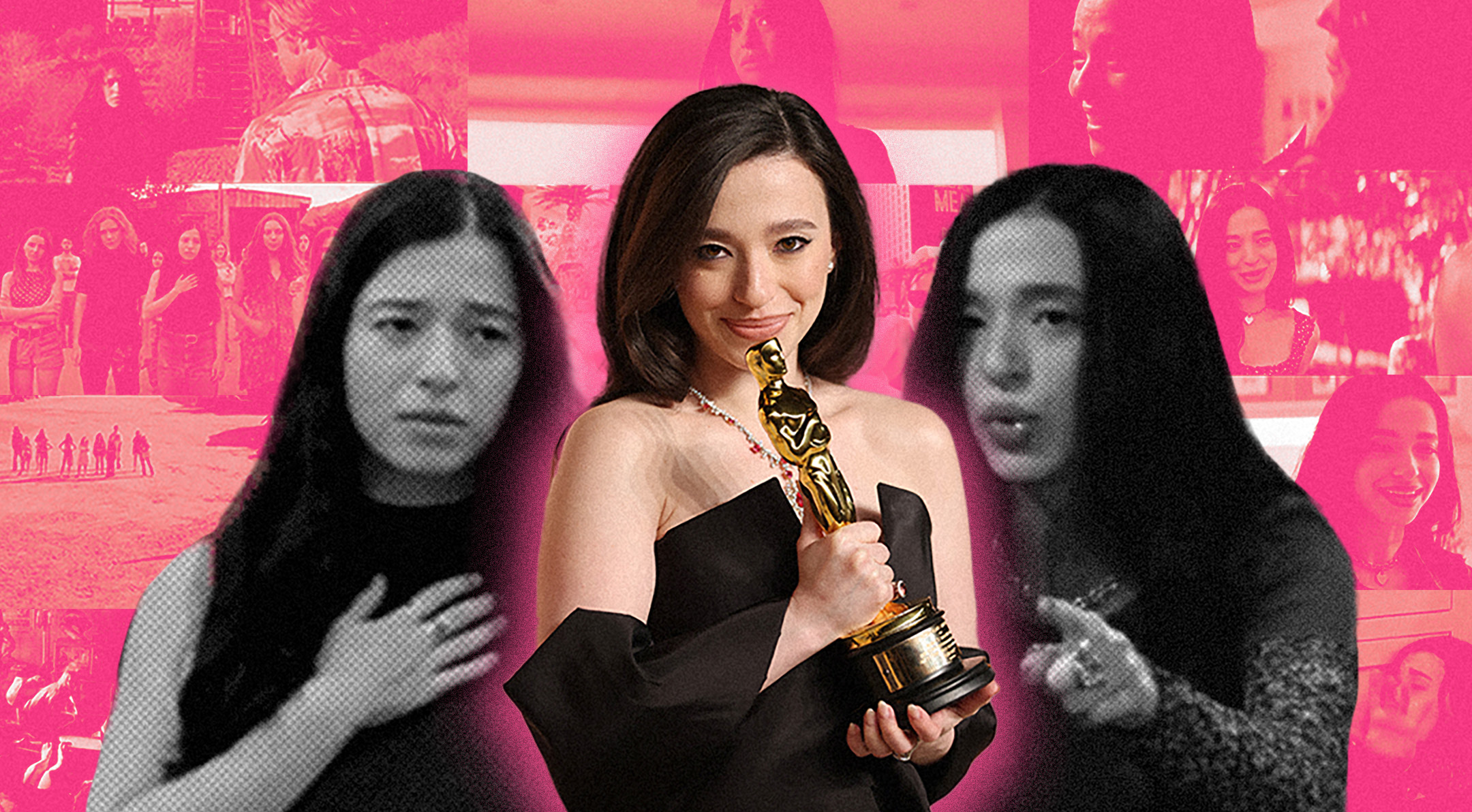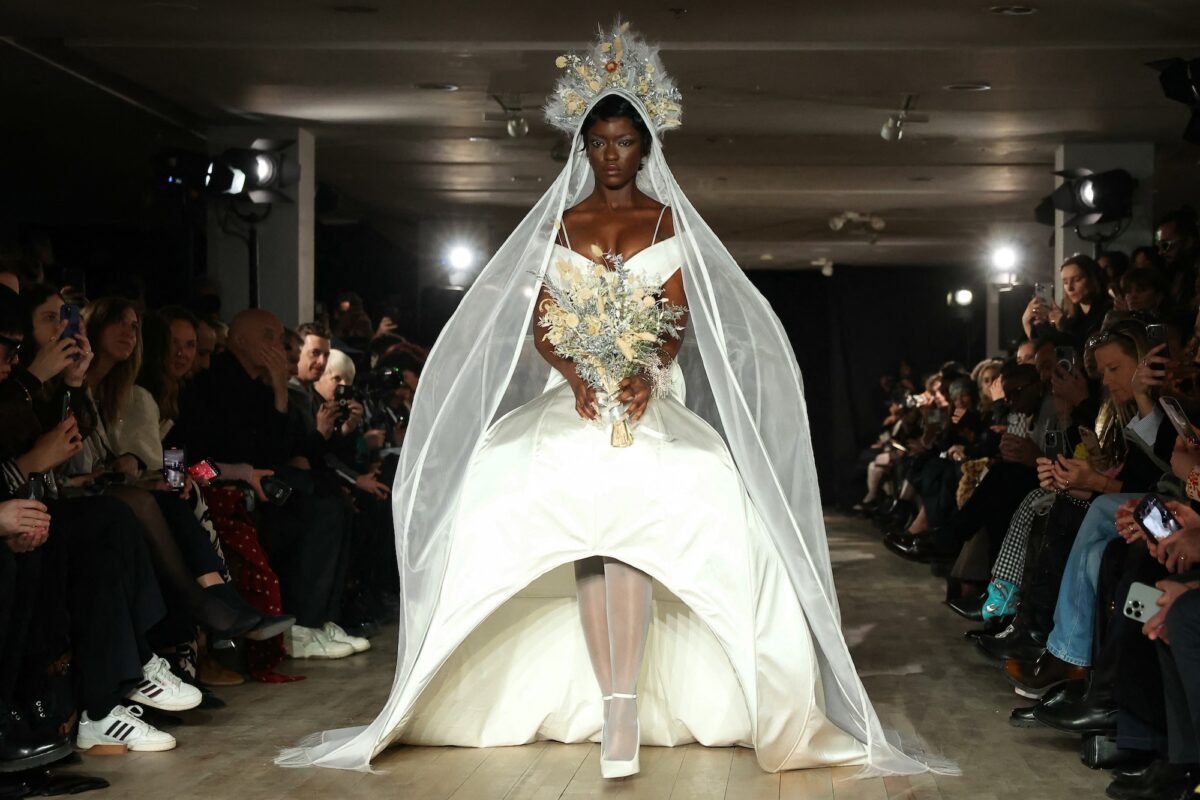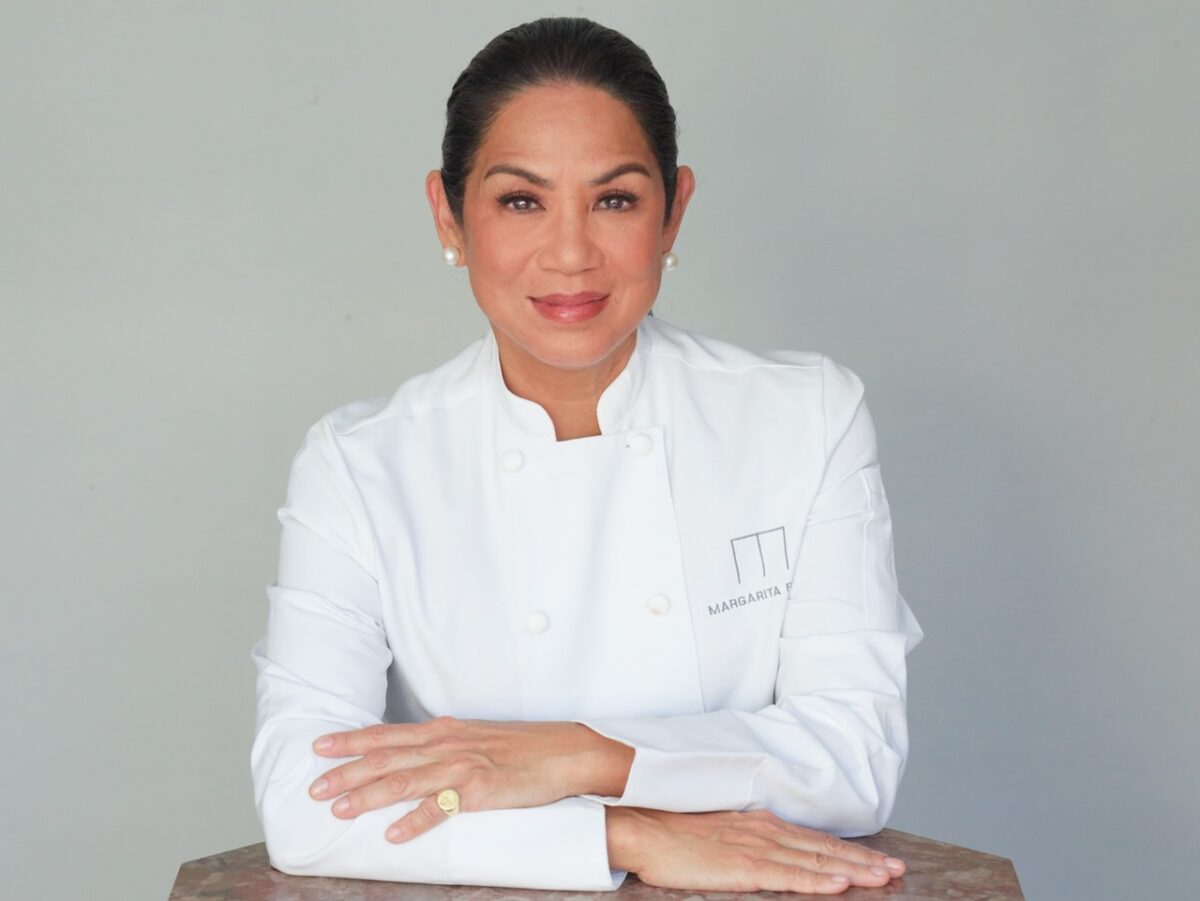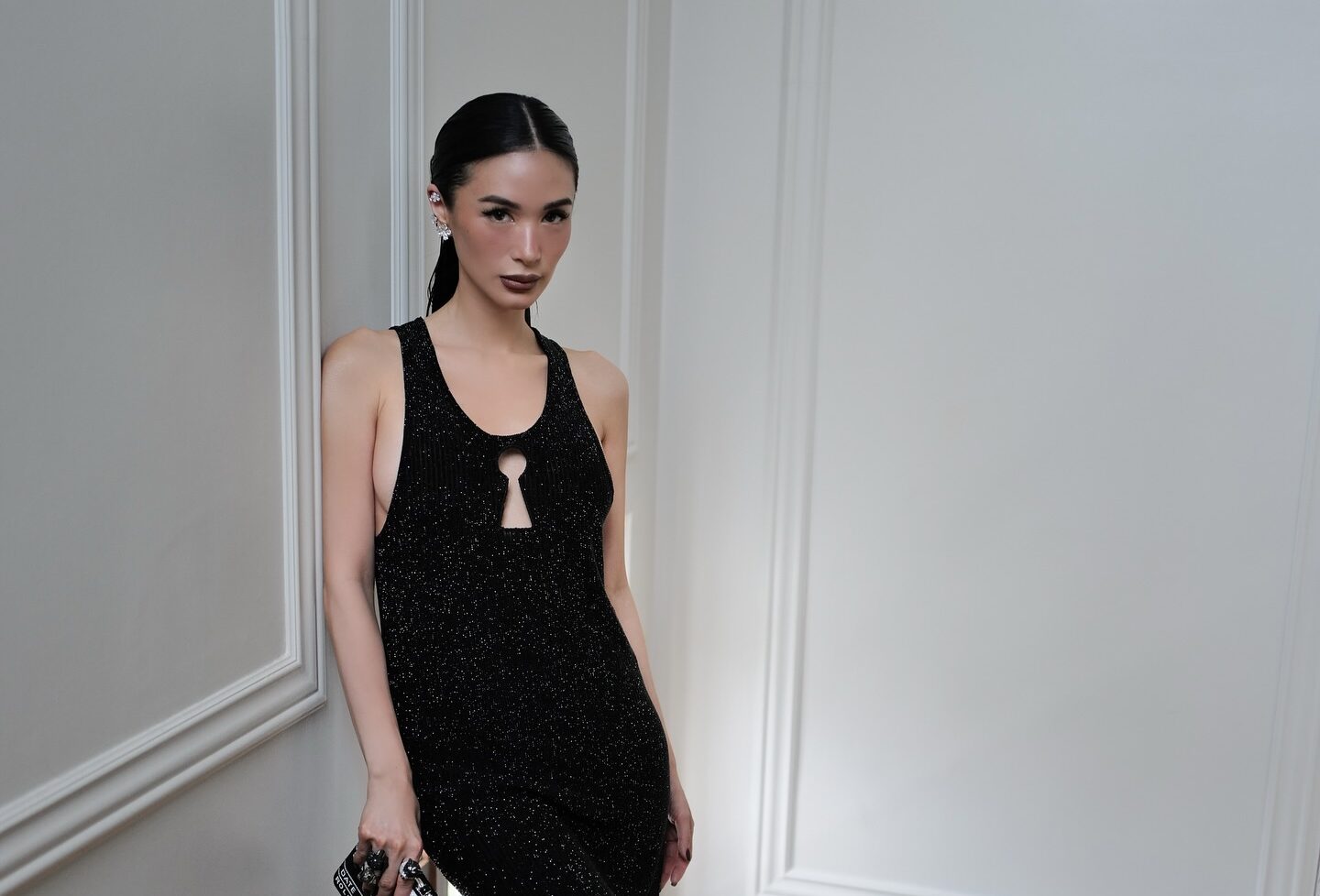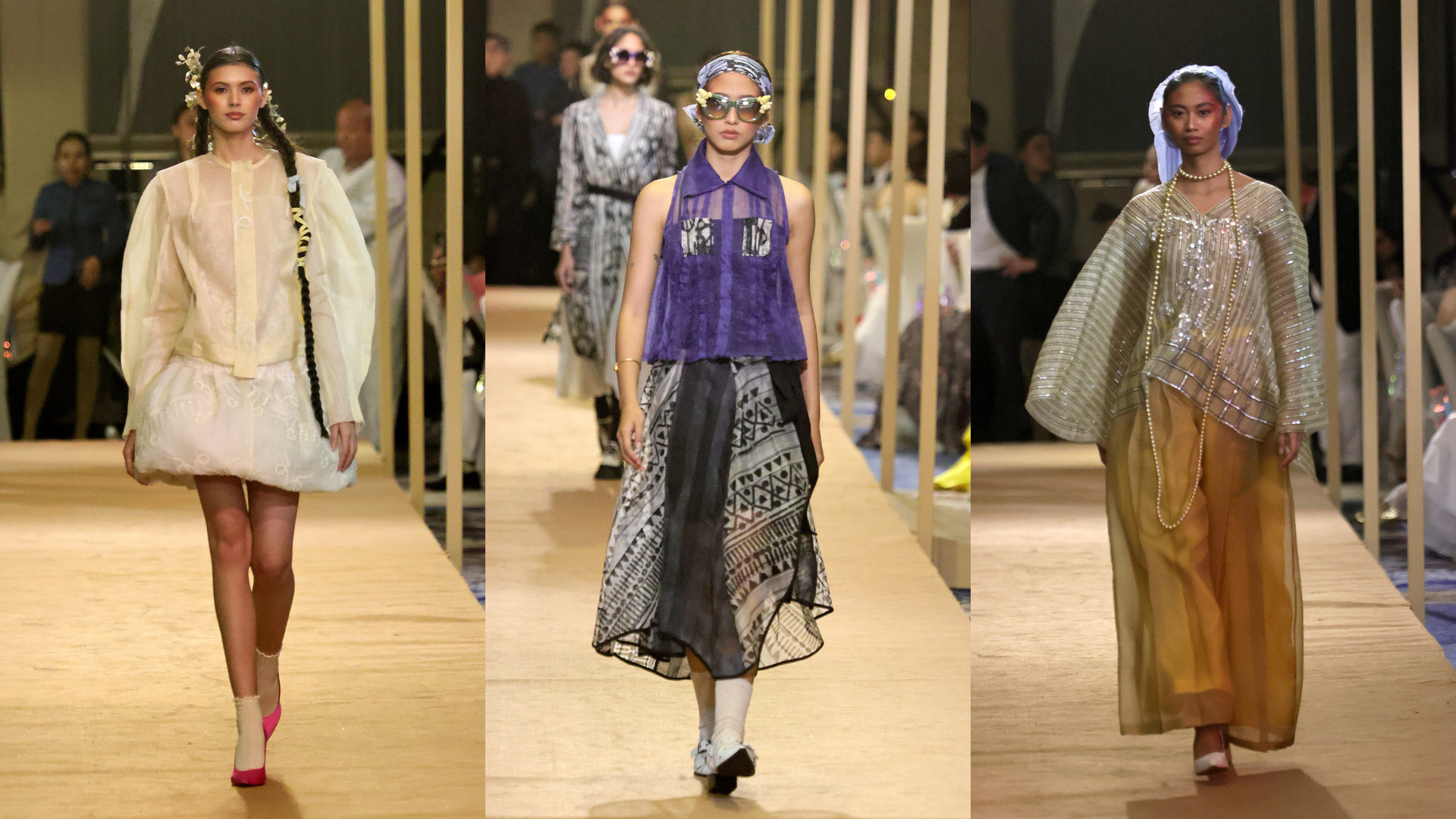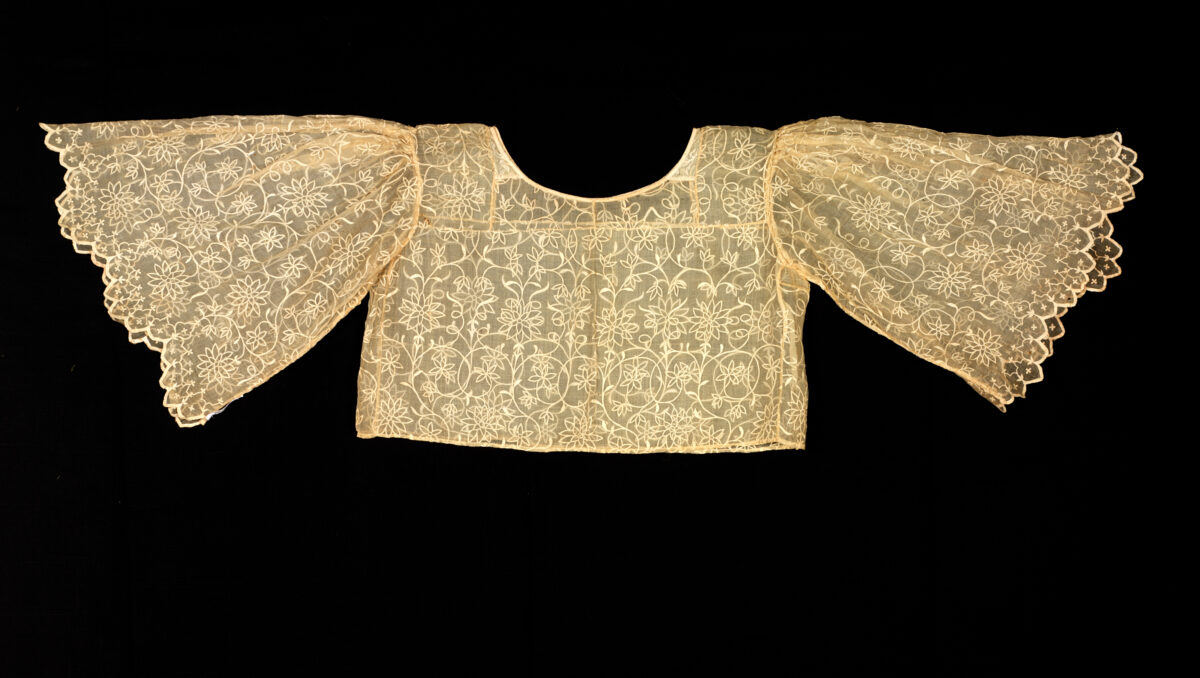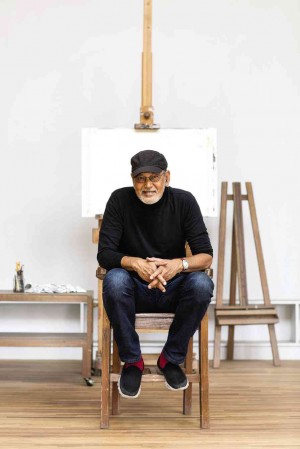 When I die you can just cremate me and scatter my ashes here,” says BenCab, gesturing with his walking stick at the lush greenery that surrounds us.
When I die you can just cremate me and scatter my ashes here,” says BenCab, gesturing with his walking stick at the lush greenery that surrounds us.
“Of course, being a National Artist, I’d probably have to put up with a state funeral,” he laughs. “With dancing and confetti.”
Since first light we have been hiking up the steep, winding trail that cuts through the impressive forest that forms the landscape surrounding the BenCab Museum in Tuba, Benguet. The artist planted many of the trees here with his own hands, and he can name each one: a Palawan cherry tree here, native cinnamon there, persimmons from Sagada…
Nipping at our heels are Ben’s two dogs: Sideways, a hyperactive Jack Russell terrier; and Bantay, a Malinois/Husky crossbreed.
“In the morning you get all this nice energy from the trees,” says BenCab, who had just turned 73 two days before, on April 10.
The artist cuts a trim figure at 73, which he attributes to a regimen of tai chi, frequent trail hikes and moderate eating habits. No doubt the prana from the trees also helps.
Presently, we reach the top where he has built a small tea pavilion, and pause to take in the landscape. Across the ravine, linked by a hanging bridge above a mountain stream, stands the BenCab Museum, beside it the artist’s spacious loft studio, and next to it his home.
Predicted
The BenCab Museum is actually a self-contained community. The compound includes not only BenCab’s mini forest, but pocket farms where the mostly Igorot groundskeepers have planted vegetables.
There is also a duck pond, some geese, and a handful of chickens.
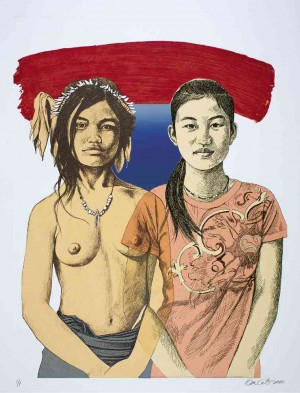 It is an idyllic village, dotted with Ifugao huts, painstakingly disassembled from their original location, transported and reassembled here, complete with the traditional dap-ay fire circle.
It is an idyllic village, dotted with Ifugao huts, painstakingly disassembled from their original location, transported and reassembled here, complete with the traditional dap-ay fire circle.
In a way, it’s a BenCab art installation on a grand scale. Every corner of this domain has been lovingly curated by the maestro’s hand, from the trees, to the gurgling koi pond stocked with red, gold and white carp, to the bonsai trees growing out of the rock walls, to the Zen garden with its own little waterfall.
Buddhas and bulol abound on the premises, representing two ways of wisdom that have influenced the artist’s world view.
“I predicted this,” says BenCab. “In the early ’90s, I had an exhibit in Hong Kong and Rico Hizon interviewed me for CNBC. He asked me what my dream for the future was and I said, ‘I want to have my own museum and my own forest.’”
It took a few years for the planets to align, but things started happening, specially after BenCab was named National Artist for the visual arts in 2006.
“I didn’t work for this,” he says. “It just came. They say when opportunity comes, you grab it. I got a lot of help from people. I just went with the flow.”
Good karma
When BenCab decided it was time to build his museum, an Ibaloi landlord offered him a piece of land at the perfect location along Asin Road in Tuba, Benguet, just six kilometers from downtown Baguio. Subsequently, the landowner offered him adjoining properties, and BenCab would sell a few paintings to raise the cash.
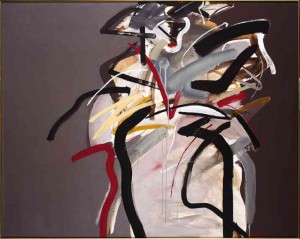 “Things just fell into place,” he recalls. “It was like the Zen principle of ‘effortless effort.’ Or maybe it was just my good karma.”
“Things just fell into place,” he recalls. “It was like the Zen principle of ‘effortless effort.’ Or maybe it was just my good karma.”
Today the BenCab Museum is one of Baguio’s top destinations, attracting hundreds of visitors a day. Just the day before, 900 people walked through its doors. Holy Week attendance set a record: over 2,000 visitors in a single weekend.
The online travel guide Trip Advisor has rated it one of the top museums in the country.
BenCab is a hands-on museum director; not only does he curate the exhibits and mount the artworks himself, he also walks through the galleries when he’s in Baguio, and is inevitably deluged with requests for photographs, autographs and selfies by museum-goers, thrilled to be in the presence of a living National Artist.
Celebrity-artist
BenCab is perhaps the country’s only celebrity-artist. (“He’s a rock star now,” quips ex-wife Caroline, in town for a visit.)
He’s come a long way since his first group exhibit in 1965, a modest affair with cohorts Pandy Aviado and Mars Galang, where his paintings sold for P40 each.
Recently, a local collector auctioned off one of his prized BenCabs for a cool P12 million. Lesser works routinely fetch P3 million to P4 million at Sotheby’s and other auction houses. And there is still a long wait list for whatever flows next from the master’s brush. Like Apple stock, BenCab paintings just keep appreciating.
“There are a lot of speculators,” notes a bemused BenCab. “They think of me as money.”
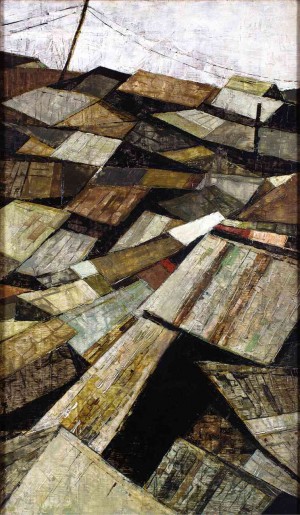 He has come to view his success with a certain philosophical detachment.
He has come to view his success with a certain philosophical detachment.
“People ask me ‘what’s next,’ and I say ‘nothing,’” he notes. “I’m happy with what I’ve been able to accomplish. I’ll just continue working.”
To mark 50 creative years, the BenCab museum is holding a year-long exhibit of paintings and drawings from the artist’s personal collection of his own work.
“When I was starting out, I used to sell everything,” he recalls. “When I could afford it, I kept one or two from each series for myself.”
Occasionally, he runs into one of his early works, and offers to buy it back, or trade a more recent piece for it. Of course, most are reluctant to part with their BenCabs. Paul McCartney, for one, is holding on to the BenCab he bought when the Beatles played Manila in 1966.
One can understand an artist’s impulse to collect himself. It’s a way of looking back at what, by any measure, has been an amazing creative journey. Not only does every picture tell a story, it marks a point in the evolution of BenCab’s art.
Here, the artist talks about some of his favorites:
‘Yakal Street Rooftops,’ oil on board, 1963
I painted this in 1963, and entered it in the Shell Art Competition. I was still at the University of the Philippines (UP) School of Fine Arts, and I was very much under the influence of Jose Joya. When they returned the painting I was already working for the US Embassy, so one of my classmates kept the painting. I got it back after 40 years. I was so happy he hadn’t sold it.
This is the view from the roof of our house, where I used to fly kites. We were living in Yakal Street, near the Bambang market. You can imagine nine of us living under one roof. That’s probably why I appreciate nature—I grew up in the city. You really look for more space.
Bambang was a colorful neighborhood. I was sketching the barung-barong by the river, in a style influenced by Manansala. But I was also sketching scavengers, charcoal sellers, the people I saw around me. I loved Avenida Rizal, the Apollo theater, the Scala, the Grand Opera House.
My older brother, Salvador, was the one who first taught me to draw. I was strongly influenced by Liwayway magazine. Bilib na bilib ako sa mga illustrators ng Liwayway, sina Max Lalata… I changed only when I went to UP because of the influence of Jose Joya.
It’s funny, because I got a job as an illustrator in Liwayway before I graduated—me, Ding Roces and Ang Kiukok. We got P8 per illustration. But we lasted only three months because the old illustrators went on strike, so Don Ramon Roces fired us and got them back.
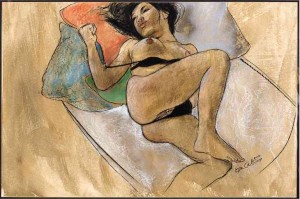 ‘Sabel,’ acrylic on canvas, 1968
‘Sabel,’ acrylic on canvas, 1968
This is an early “Sabel.” I was in a transition from my hard-edged style. F. Sionil Jose exhibited this in Japan, then I lost track of it. One time I went to La Solidaridad and I saw it. I got this back about 15 years ago.
I would see the derelict woman who would become “Sabel” when I was still living in Yakal Street. I saw her only from a distance. I didn’t have any interaction with her, but I would do a lot of quick sketches of her from life, mabilis lang, parang abstract.
When I moved to Malate, I lost track of her but I would continue to paint her from memory.
My first one-man show was at the Indigo Gallery in 1966. Arturo Luz saw it and invited me to show at Luz Gallery. I was surprised because he was exhibiting abstract minimalist art by Jose Joya and Lee Aguinaldo. I was the only figurative artist able to show at the Luz.
Because I was working in the Sunday Times Magazine, I had a lot of friends in media. Ding Roces wrote about my show, then Nick Joaquin for the Free Press, kaya sumikat ako kaagad.
The Indigo Gallery became a hub. It was right beside Los Indios Bravos. In 1969 I met Caroline Kennedy, and we started to travel. We got married and settled in London later that year.
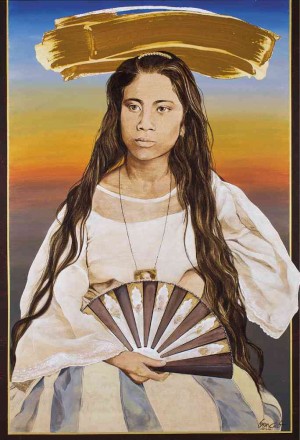 ‘Woman with Fan,’ acrylic on canvas, 2001
‘Woman with Fan,’ acrylic on canvas, 2001
I went to London to get away from the old, and to see what was new with the world. At that time the big thing was minimalism, flat squares. I thought, why should I jump on the bandwagon of what’s current? It wasn’t my culture.
In London, David Hockney and Francis Bacon started what they called “the new spirit of painting.” It was a return to figurative art, which I liked. I had studied Japanese prints, and thought, “How were they able to influence the Europeans?” Maybe I can show my own culture and influence them as well.
I started the “Larawan” series in 1972. I was buying a lot of Filipiniana books in London with old photographs from the colonial era. I was showing the parallelism between the past and present. When I was at UP I loved reading about history, like Nick Joaquin’s “A Question of Heroes.”
When I showed the “Larawan” series here in 1972, it was a big hit. Most people thought it was about nostalgia, but it’s actually commentary, my personal feelings about what was happening with martial law.
But I think, beyond that, what I was really trying to show was my skill as a painter.
7
‘GLIMPSES of the Past Present XV,’ lithography, etching and collagraph on pigment stained handmade paper, 2010
I came home from London in November of 1985. The main reason was my divorce from Caroline, but it was also because of what was happening here—the snap election.
I decided to settle in Baguio. A lot of artists were coming back: Santi Bose came back from the States, Dave Baradas, Kidlat Tahimik. The energy and the group dynamic was happening, so in 1987 we started the Baguio Arts Guild.
I’ve always been interested in tribal art. In London I would go see the History of Man exhibit at the museum, which featured tribal art from Africa to Oceania. I thought, we also have tribal art, which is underrated, and there’s so much anthropological material on it. I’ve always liked collecting so I decided to concentrate on Cordillera art and Filipiniana books.
At the back of my mind was the thought that someday I would put up a museum that would show not only my own work, but Philippine tribal art and contemporary works. In the end, all that you leave behind is your work. The museum will be my legacy, and also my little contribution to the environment.
2
‘Daydreaming,’ pastel on paper, 2007
One of the six galleries in the BenCab Museum is dedicated to erotica.
Manansala said, “Kung wala ka nang libog, pangit na ang painting mo.” The sexual and the creative impulse are connected, and I think it’s important for the artist to explore both. I like drawing nudes from life; I have an endless fascination with the female body.
The ’70s was the time of the sexual revolution, the “Kama Sutra,” the “Joy of Sex,” “Emmanuelle.” When I was staying at the Indigo, women would just knock on your door. I had a great time.
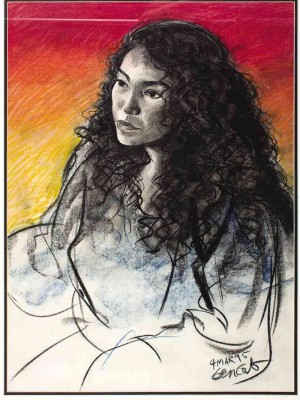 I grew up among women. I was the youngest… There was my brother Salvador, then six sisters, then me. I just love women, but I like strong women, formidable women with strong personalities.
I grew up among women. I was the youngest… There was my brother Salvador, then six sisters, then me. I just love women, but I like strong women, formidable women with strong personalities.
All of my relationships have been with strong women, that’s why I end up being dominated.
‘Lolita Carbon,’ pastel on paper, 1995
When I was still in London, I did a series of portraits of punks in the early ’80s who were very colorful. I thought the (local) alternative musicians could be colorful as well. My idea was to draw them from life, so they posed for me. Some of them, like Joey Ayala, would play while I was drawing them, so I was able to enjoy a one-on-one concert.
I enjoyed drawing them, and I ended up doing 70 portraits of musicians, which resulted in the book “Rock Sessions,” which is now out of print. I ended up keeping three.
Lolita Carbon is an iconic figure. She was 40-something at the time. She was drinking rum while I was sketching her. I try to catch something of the character and personality of the subject when I draw portraits. When you draw from life, the subject moves and you get a certain angle that a photograph cannot give you.


